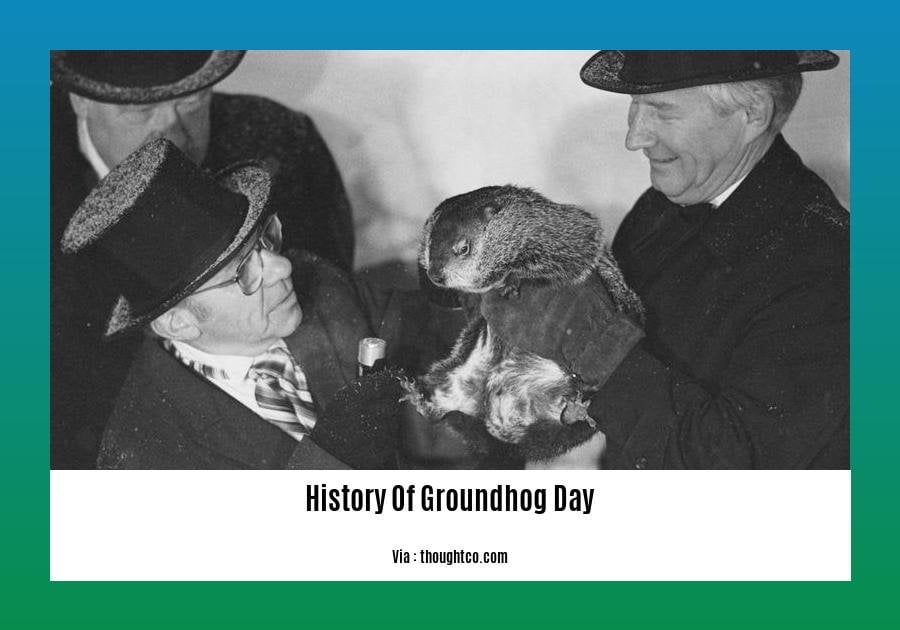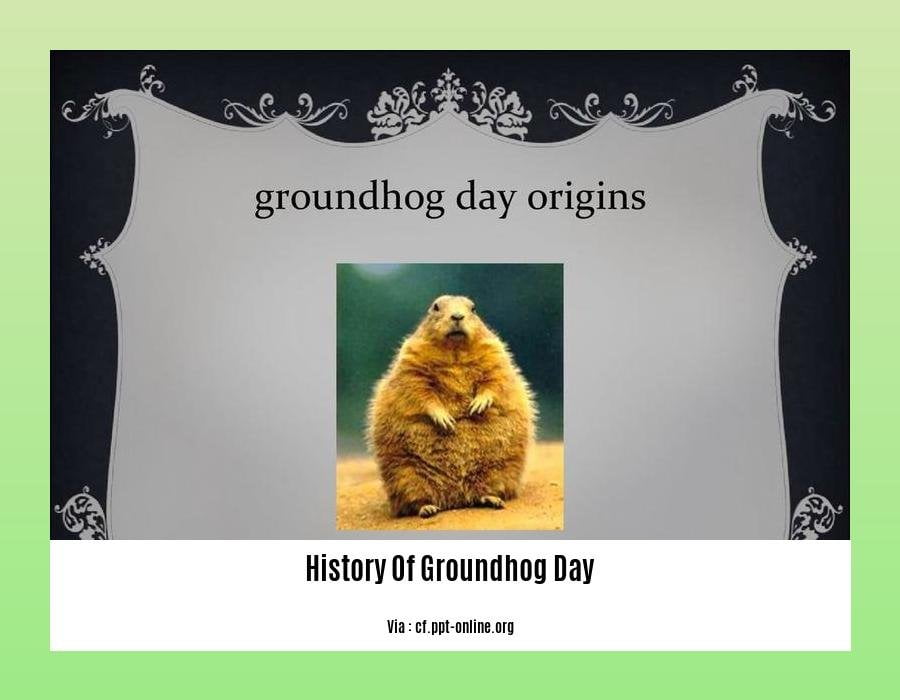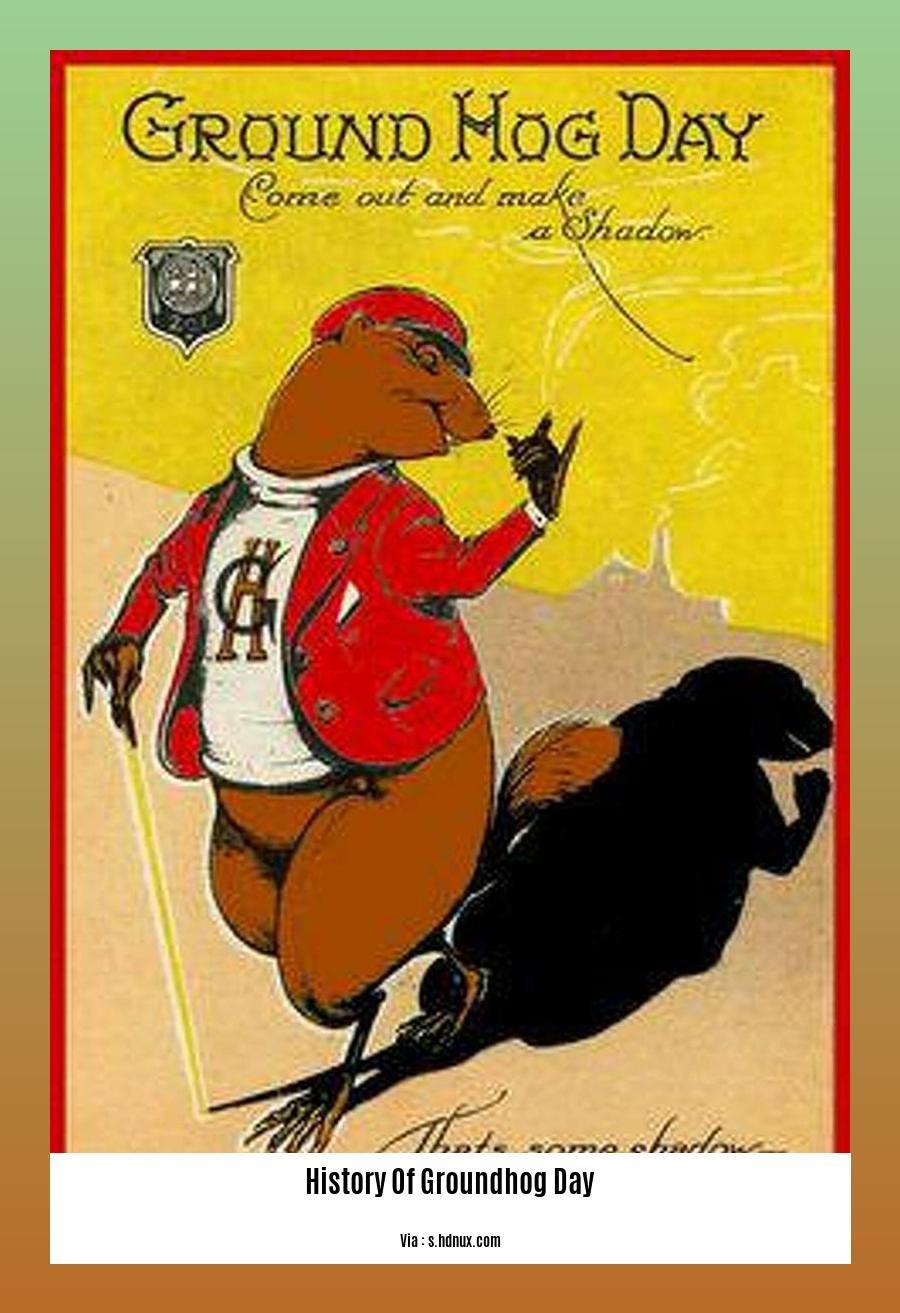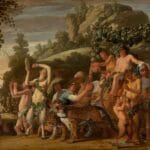– The History of Groundhog Day: Origins, Traditions, and Cultural Significance] Groundhog Day, an enchanting tradition steeped in folklore, has captured the hearts and imaginations of people for centuries. With its origins tracing back to ancient European festivals, it was brought to America by German immigrants in the 18th century. Today, Punxsutawney, Pennsylvania stands as the epicenter of this beloved event, drawing crowds eager to witness the prognostications of the furry oracle, Punxsutawney Phil. Join us as we delve into the rich history, cultural significance, and enduring legacy of Groundhog Day.
Key Takeaways:
- Groundhog Day predicts winter length based on groundhog activity.
- Christian Candlemas influenced the tradition, using candles on February 2nd to indicate winter severity.
- German immigrants introduced the event to the US, using groundhogs instead of hedgehogs.
- Punxsutawney, Pennsylvania, hosted the first official celebration in 1887.
History of Groundhog Day

Have you ever wondered how Groundhog Day came to be? It’s a tradition steeped in history and folklore, so let’s dive into its enchanting origins and evolution.
Roots in Candlemas
History of Groundhog Day traces back to the ancient Christian festival of Candlemas, celebrated on February 2nd. Candles blessed that day were believed to symbolize the length and severity of winter. If the day was sunny, it foretold a long, harsh winter; otherwise, spring’s arrival would be near.
German Immigrants and the Groundhog
German immigrants brought this tradition to America, replacing the European hedgehog with the groundhog. Punxsutawney Phil became the most famous groundhog seer, with the first official Groundhog Day celebration taking place in Punxsutawney, Pennsylvania, in 1887.
Modern Tradition
Today, Groundhog Day is a beloved tradition observed across the United States and Canada. People eagerly await Phil’s prediction, hoping for an early spring or bracing themselves for six more weeks of winter.
Cultural Significance
Beyond its playful nature, Groundhog Day holds cultural significance. It represents our collective hope for warmer days, the anticipation of spring, and the enduring human fascination with nature’s rhythms. Its story is a testament to the intertwining of ancient beliefs, immigrant experiences, and the enduring power of traditions.
Don’t miss out on the fascinating insights into Punxsutawney Phil’s predictions, revealing the history and accuracy of this beloved groundhog’s weather prognostications. Delve into the German origins of Groundhog Day, uncovering the rich cultural traditions that gave rise to this enigmatic holiday. Immerse yourself in the time-honored Groundhog Day traditions, from the legendary prognostication to the lively festivities that make this day so special.
WHAT ARE THE HOLIDAY’S ORIGINS?

Groundhog Day’s origins can be traced back to ancient European festivals like Candlemas, which took place on February 2nd. During Candlemas, candles blessed on that day symbolized the length and severity of winter.
German immigrants brought this tradition to the United States, replacing the hedgehog with the groundhog, a more common animal in their new home.
In 1887, Clymer Freas, a local editor in Punxsutawney, Pennsylvania, created the modern-day tradition of Punxsutawney Phil, a groundhog who predicts the weather. Phil’s legendary immortality adds to the allure of the tradition.
Key Takeaways:
- Groundhog Day originates from pre-Christian festivals.
- German immigrants brought the tradition to America, replacing the hedgehog with the groundhog.
- The modern tradition of Punxsutawney Phil began in 1887.
Sources:
- Groundhog Day: History and Facts
- History of Groundhog Day: Origin & Facts
WHY IS IT CELEBRATED IN PUNXSUTAWNEY?
Celebrated in the small town of Punxsutawney, Pennsylvania, Groundhog Day has become an iconic American tradition. But why is Punxsutawney the epicenter of this peculiar holiday?
Origins in Punxsutawney
The roots of Punxsutawney’s Groundhog Day lie in the late 19th century. In 1887, a group of local groundhog hunters, known as the Punxsutawney Groundhog Club, decided to make their annual hunt a public event. They designated a groundhog named Phil as the official weather prognosticator, and the rest is history.
Punxsutawney Phil: The Star of the Show
Over the years, Punxsutawney Phil has become synonymous with Groundhog Day. The club claims Phil is immortal, with a new groundhog taking his place every time the old Phil passes away. This adds an element of mystery and continuity to the tradition.
Cultural Significance
Groundhog Day has become a deeply ingrained part of American culture. Its blend of folklore, weather prediction, and community celebration has resonated with people for generations. The event attracts thousands of visitors to Punxsutawney each year, boosting tourism and local businesses.
Key Takeaways:
- Groundhog Day began in Punxsutawney, Pennsylvania, in 1887.
- The Punxsutawney Groundhog Club is responsible for the annual celebration.
- Punxsutawney Phil, the official groundhog weather predictor, is said to be immortal.
- Groundhog Day has become a beloved American tradition, attracting visitors and boosting local economies.
Sources:
- Groundhog Day History and Facts | HISTORY
- Groundhog Day explained: Origins of Punxsutawney Phil and why we still celebrate
FAQ
Q1: When did Groundhog Day originate?
A1: Groundhog Day has its origins in pre-Christian festivals and was brought to the United States by German immigrants. The first official Groundhog Day celebration was held in Punxsutawney, Pennsylvania, in 1887.
Q2: Why is Groundhog Day celebrated in Punxsutawney, Pennsylvania?
A2: The first official Groundhog Day celebration in the United States took place in Punxsutawney. Clymer Freas, a local newspaper editor, came up with the idea to designate Punxsutawney Phil as the official groundhog weather forecaster in 1887.
Q3: Who is Punxsutawney Phil?
A3: Punxsutawney Phil is the most famous groundhog associated with Groundhog Day. He is the official weather-predicting groundhog of the Punxsutawney Groundhog Club, which has been holding the annual Groundhog Day celebration since 1887.
Q4: How does Punxsutawney Phil predict the weather?
A4: According to legend, if Punxsutawney Phil sees his shadow on Groundhog Day, winter will last for six more weeks. If he doesn’t see his shadow, spring will arrive early.
Q5: Is Groundhog Day an accurate way to predict the weather?
A5: While Groundhog Day is a fun tradition, its accuracy in predicting the weather is not scientifically proven. However, the tradition remains a popular way to mark the end of winter and the beginning of spring.
- Crypto Quotes’ Red Flags: Avoid Costly Mistakes - June 30, 2025
- Unlock Inspirational Crypto Quotes: Future Predictions - June 30, 2025
- Famous Bitcoin Quotes: A Deep Dive into Crypto’s History - June 30, 2025
















